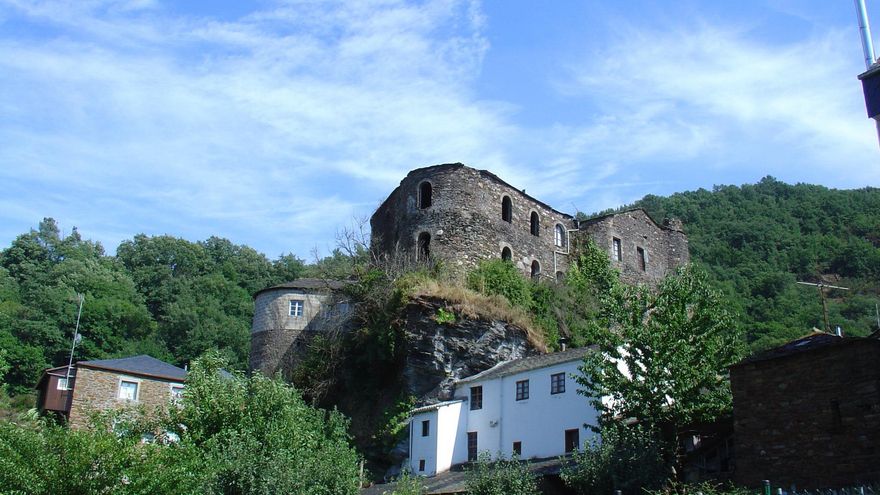
A Pobla de Navia is a town in Galicia with a population of about 300 people, located next to the Navia River in an environment characterized by deep valleys and green mountains, part of the Os Ancares region. The town, also known as Puebla de Navia, is the capital of the municipality of Navia de Suarna, in the province of Lugo, Galicia. The town’s location between altitude and waterways has influenced its development over time.
The traditional street layout has been preserved in the city center, with houses built with stone and wooden balconies reflecting the typical architecture of the area. The villa maintains a compact structure, with daily life expressed around open spaces and paths that encourage connection with the surroundings. The presence of trails and country roads allows you to explore the region and feel the natural landscape surrounding the town, which is a combination of forests, rivers and mountain slopes.
Among the prominent elements of A Pobla de Navia’s landscape are the medieval castle and the old bridge over the river, which continue to be visible and recognizable around the town. These landmarks represent reference points within the town and contribute to its identity within the territory of Os Ancares.
The historical heritage of A Pobla de Navia and its surroundings
A Pobla de Navia’s main historical attraction is the medieval fortress known as Castillo de Navia de Suarna or Castillo del Conde de Altamira. The building is located on a rock rising above the Navia River and is mentioned in a document from 1037. Although most of the castle is now gone or has been restored, it is still possible to distinguish parts of the walls and circular towers that reflect its defensive function. The fortress was destroyed during the Irmandinian revolt in 1467, but was later rebuilt. In 1994, the building was declared a cultural heritage site, reflecting its historical and heritage importance in the area.

From the fortress, you can admire the medieval Romanesque bridge that still stands today. The bridge, known as Ponte Vella, was built in the 15th century and is distinguished by a distinctive pointed arch of considerable height in the center. This structure made it possible to integrate both banks of the Nabia River and control the movement of people and goods. Its preservation provides an example of the engineering used for this type of infrastructure in the Middle Ages.
The town center has preserved its traditional street layout with stone houses and wooden balconies, and its central square, the Ciao da Torre, remains a reference point and meeting place for the neighborhood. The organization of this space allows you to visit historical buildings that mark the continuation of rural life in the village.
The location of A Pobla de Navia in the Os Ancares region offers an environment consisting of valleys, rivers, forests and mountains, where it is possible to practice activities such as hiking and rural tourism, on routes that include areas with an ancient human presence. The combination of historical heritage and nature makes this villa a place where you can observe both cultural elements and seasonal changes in the landscape, especially in autumn.



